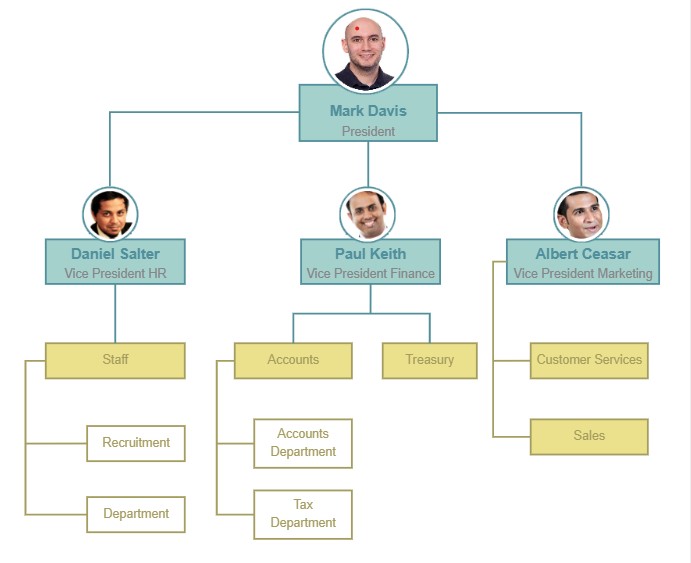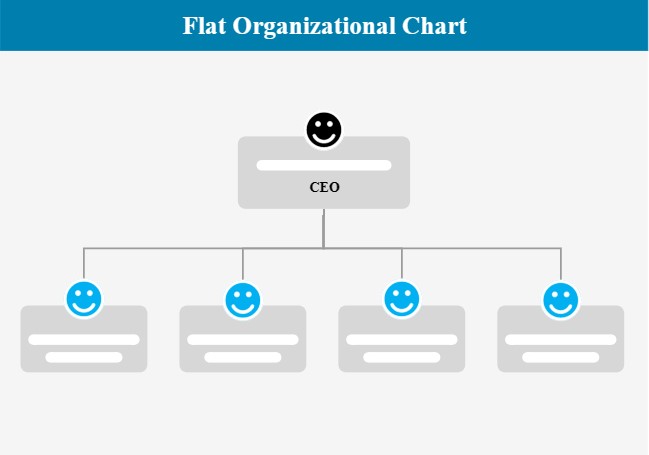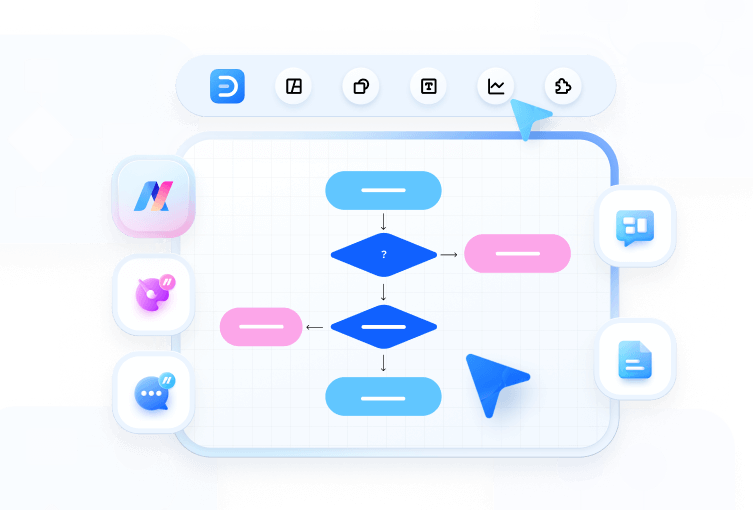Essentials for Creating a Flat Organizational Chart
A flat organizational structure eliminates the need for middle-level management between the authority and frontline workers, achieving the least hierarchical environment.
Edraw Content Team
Do You Want to Create Your Flat Org Chart?
EdrawMax specializes in diagramming and visualizing. Learn from this article to know everything about flat orga chart and create your own with ease. Just try it free now!
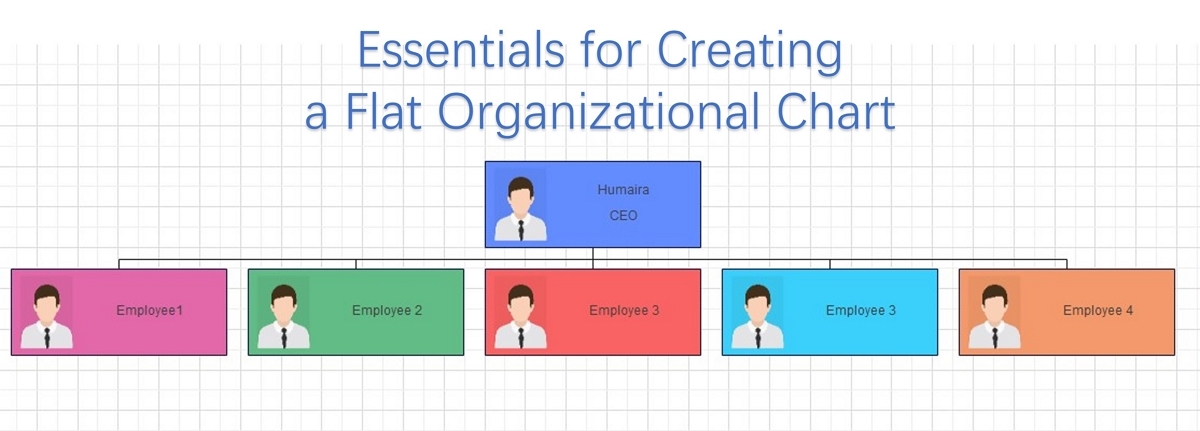
Choosing a befitting organizational structure for your business is one of the most decisive steps, especially if you are a newbie in the market. An organizational structure defines the communication level, information propagation, and allocation of responsibilities within your work circle.
A flat organizational structure assists in seamless company operations, improved coordination, talent recognition, efficient budget management, and the flourishment of positive work culture. All these perks of flat-structured org charts compel us to describe flat organizational charts in detail, highlighting their working mechanism, good & bad sides, and practical steps to craft them.
1. What Is Flat Organizational Structure & Flattening an Organization?
Understanding the flat organizational structure is essential for implementing it in your business cosmos. Here we have defined what is the flat organizational structure and what the flattening of an organization means to enhance your insight.
Flat Organizational Structure:
Flat organizational structure refers to the business structure having less or almost no levels of intervening management, promoting a non-hierarchical system. Direct communication occurs between frontline workers and executives, ensuring a smooth workflow and efficient decision-making. Such organizational structures promote the autonomy and creativity of workers without taking suggestions from the middle authorities & managers.
This type of organizational structure suits small and medium-sized organizations well, where entry-level workers can develop a direct connection with leaders. Additionally, organizations or businesses encouraging innovation, workers' autonomy, and collaborative decision-making can benefit from the flat-natured organizational structure.
Flattening An Organization:
Flattening an organization involves delayering, a process in which all or some hierarchy levels are removed to terminate the middle-level management. Authority shift takes place from middle-level managers to the employees, shortening the organization's long chain of command within the framework.
Delayering does not imply cutting jobs or burdening frontend workers; instead, it dissolves the barriers of meddling tiers to smooth out collaboration, reduce wage costs, and accomplish other fruitful activities.
2. Examples of Flat Structure Organizational Charts
A visual illustration presents things in a clear-cut way; therefore, we have offered a few pictorial instances of flat org charts examples for better comprehension.
This flat organizational chart for small businesses clarifies the responsibilities of each member, visualizing their hierarchical relationships. The president instructs Vice presidents, who, in turn, direct the entry-level staff to perform specific operations, such as customer service, sales, treasure management, recruitment, and other activities.
The chart mentioned above is the most befitting solution for startup companies and small corporations because it cuts down the managers' heaps and middlemen. The manager tier is absent, and everyone is clearly aware of his duties & day-to-day responsibilities besides having a seamless connection with the owner.
The complete absence of the hierarchical system makes the above structure the simplest of all. It entails the organization's CEO and a group of employees working under his stewardship. These employees may be handling marketing, finance, human resources, sales, or other operations, depending on the nature of the business and working style.
3. How Does a Flat Org Chat Work?
Usually, a company's organizational chart determines the authority, control, division of labor, and reporting structure. A general rule of thumb is the hierarchy within the organization, allocating different roles to each individual. The high-level managers instruct the middle-level managers, and middle managers instruct the frontline workers, thus forming a hierarchical stratification.
However, this hierarchical structure can exhibit drawbacks in certain conditions, such as misinterpretation of information, less opportunity for creativity, and incompetence in managing employees' wages.
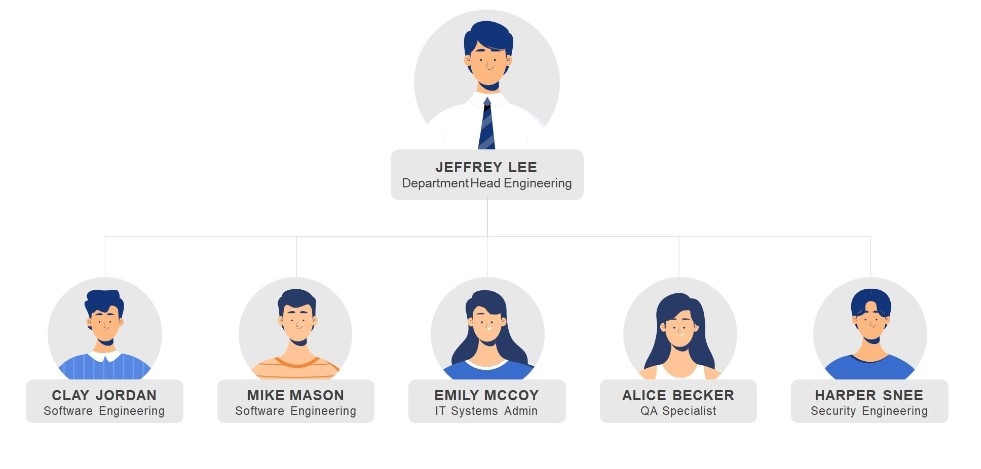
On the other hand, the flat organizational chart works differently; the frontline workers directly report to the high-level management in case of an issue or suggestion. Workers and the leaders share the intermediate management tier's role, wiping out any need for third-party indulgence.
Directly disseminating information without channelization assists in vivid ideas exchange with little formalization. Moreover, person-to-person interaction helps run things with little hassle because of structure simplicity. Additionally, authority can quickly identify masterminds and individual creativity by taking employees' viewpoints through effective discussions and project negotiations.
4. Pros and Cons of Using a Flat Organizational Chart
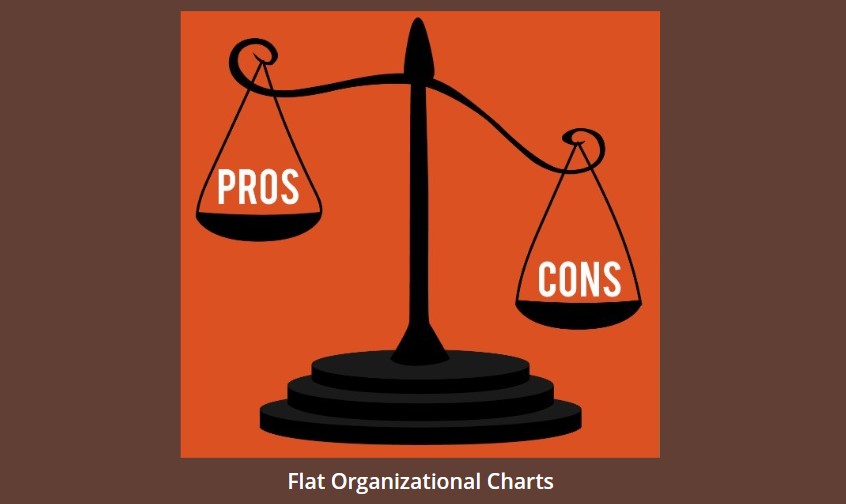
Every business strategy carries advantages, but it may lag somewhere; the same rule applies to flat organizational charts. We have deeply evaluated the benefits & drawbacks of flat org charts based on actual business examples and presented here below.
Pros:
-
Less hierarchy promotes confidence and boosts team spirit.
-
It discourages a traditional mode of business structure that manipulates power.
-
Flat org charts make it easier for workers to report to the leaders in case of a problem.
-
A short chain of command allows collaborative and informed decision-making.
-
It gives more autonomy to the workers, and they work under the specified principles without any third-party intrusion.
-
An autonomous working mode leads to enhanced creativity and innovation of business strategies.
-
This organizational structure lowers the operational costs because flat org charts involve less number of workers.
-
Authority can efficiently monitor all the workers and check whether they fulfill their daily responsibilities.
-
A flat org structure leads to greater job satisfaction due to an autonomous attitude of working and a substantial amount of responsibilities.
Cons:
-
There is a greater risk of generalization, which may lead to confusion; it becomes unclear whom to contact in certain cases.
-
The absence of a formal organizational structure may foster power struggles.
-
Lack of accountability arises among workers because each works autonomously.
-
No opportunity for leveling up because the hierarchy doesn't exist.
5. How To Create a Flat Organizational Chart?
If you have recently stepped into the business realm, you can utilize the EdrawMax platform to constitute a flawless flat organizational chart for your firm.
EdrawMax is a top-notch diagramming solution, providing countless customization choices, appealing templates, relevant clipart & symbols, an intuitive interface, and step-by-step tutorials to facilitate its users. You can utilize its drag-and-drop feature, import symbols, and personalize your org chart color theme based on your preferences.
Steps for Creating a Professional Flat Org Chart Using EdrawMax:
The navigable interface of EdrawMax allows you to either commence your org chart from scratch or customize a pre-built org chart template. For the detailed procedure, check this video tutorial or follow the given steps:
Step 1: Download the "Wondershare EdrawMax" application to utilize it for creating your org charts.
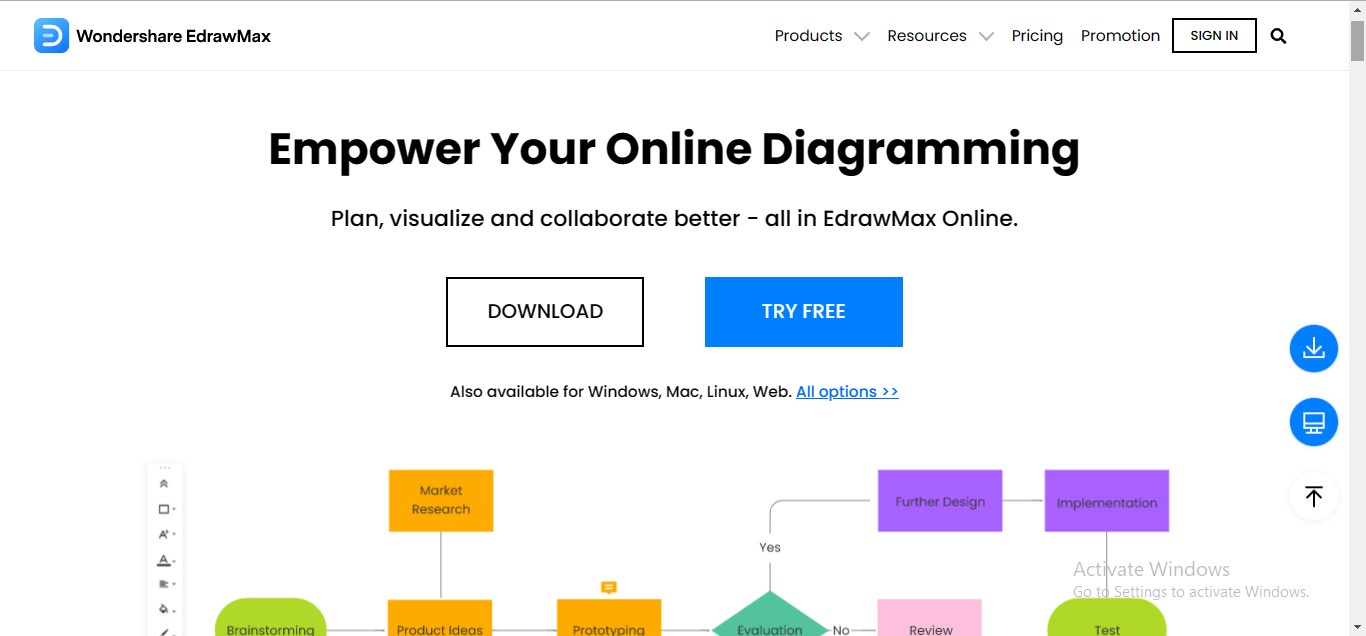
Step 2: Click the "New" option from the left panel and choose the "Org Chart" option to start creating your flat organizational chart.
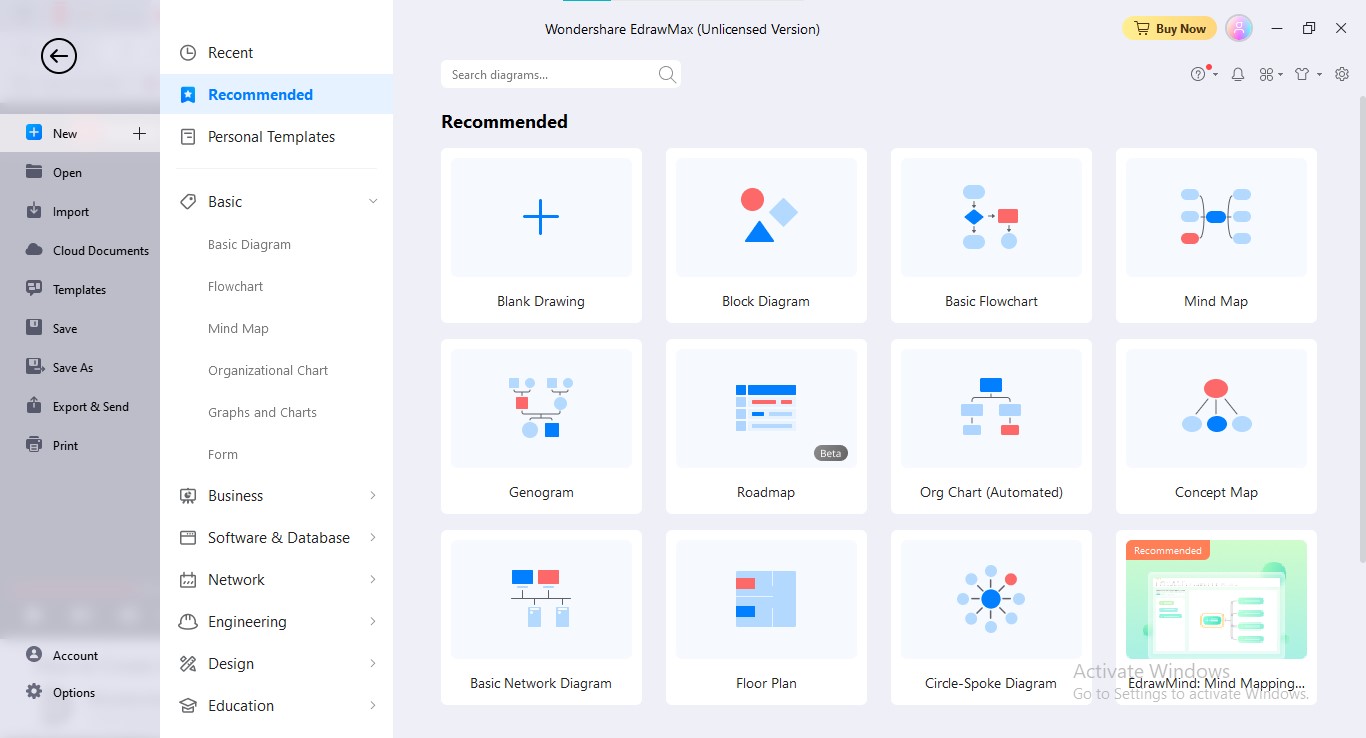
Step 3: Add Symbols to your chart; hover over any box and click the "+" button below to add a new section. You can also incorporate symbols relevant to your field by navigating to the "Symbol" option in the Menu Bar.
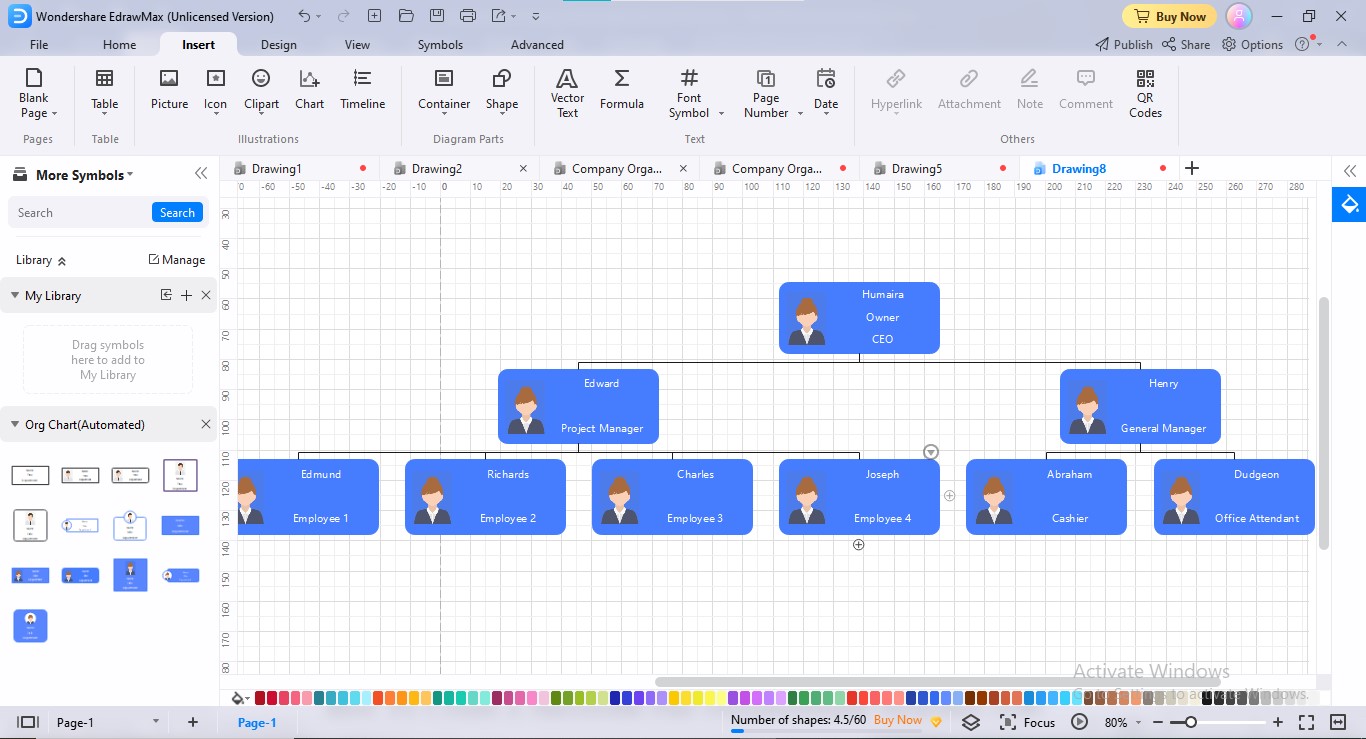
Step 4: After adding your symbols, you can Customize your flat org chart by applying a color scheme, theme, diagram layout, and font customization of your choice. You can also insert icons, clipart, pictures, charts, timelines, font symbols, formulas, comments, etc. if needed.
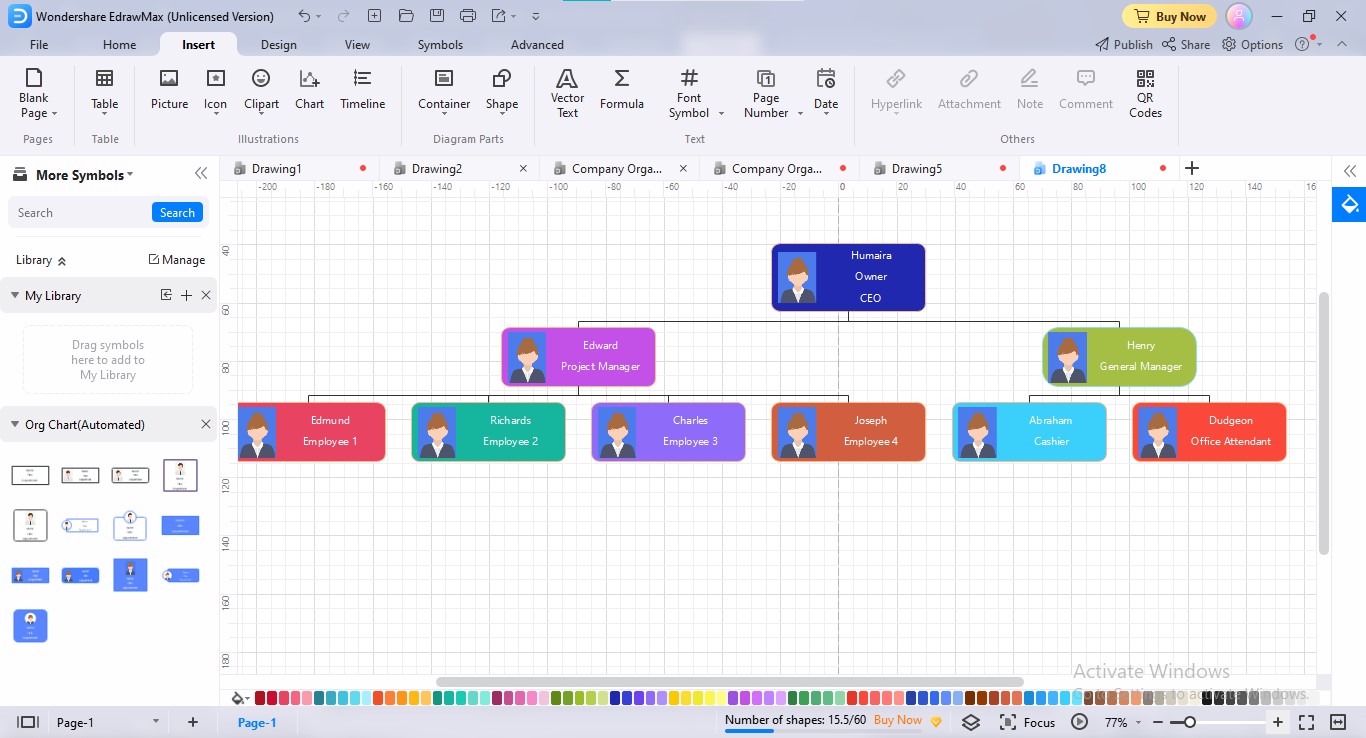
Step 5: After accomplishing your organizational chart, Export it for future use. For this, click the "Export Button" and choose your preferred format for file export.
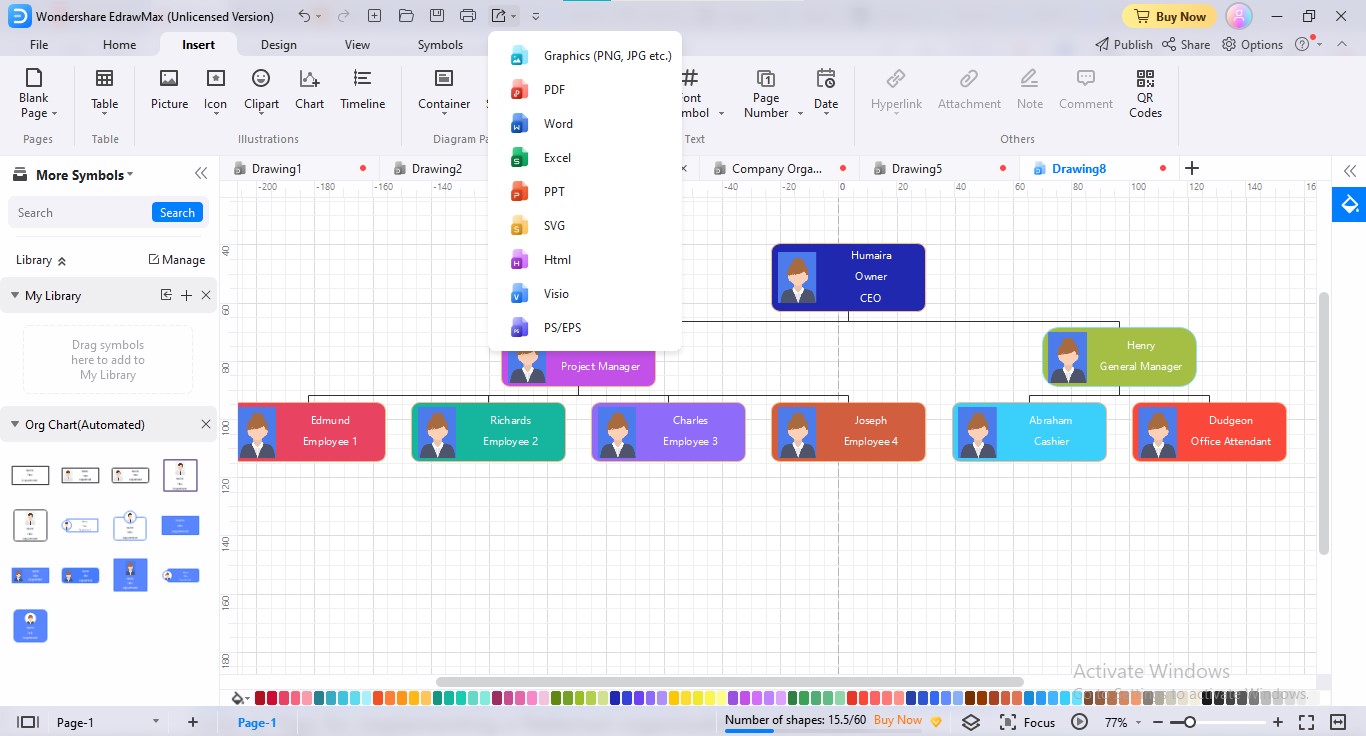
6. How To Create a Successful Flat Organizational Structure
Flattening your organization may seem easy, but in reality, it can be challenging and time-consuming, requiring you to make painstaking efforts. Due to this reason, we have described some valuable tips if you intend to implement the flattened structure in your business circle.

Peer-to-Peer Meetings:
Developing a sense of intimacy among your subordinates is very important as it gives them the confidence to accomplish their tasks with utter inspiration. Therefore, you must arrange meetings not only to train them about the very organizational structure but also to guide them about their roles.
Providing Access to Resources:
As employees are autonomous and can make decisions, they must have direct access to the resources, such as policies, processes, plans, and procedures. Direct access to the resources will encourage them to work with entire motivation and assiduity. It is advisable to create a hub where each piece of information is saved and disseminated to all employees.
Communicating Your Prospective Plans:
Communication resolves many ambiguities, especially regarding the company's expectations of its workers. When you discuss your future plans and expectations with your employees, they will come to know what the company demands from them. Due to having a sense of direction, they will comfortably fulfill their responsibilities and day-to-day tasks.
Building an Amicable Work Environment:
Cutting down the hierarchies will enable you to approach the frontline workers without the meddling of middle managers. Allow your subordinates to express their thoughts, ideas, and perspectives about particular activities so that they feel included. Additionally, you must encourage them to deliver their viewpoints while making decisions to assess their interest and creativity level.
Building an Amicable Work Environment:
Cutting down the hierarchies will enable you to approach the frontline workers without the meddling of middle managers. Allow your subordinates to express their thoughts, ideas, and perspectives about particular activities so that they feel included. Additionally, you must encourage them to deliver their viewpoints while making decisions to assess their interest and creativity level.
Analyzing Needs Vs. Levels:
Flattening does not compel you to remove all the layers of management and put all the work pressure on your frontline workers. You must evaluate your business needs, such as business size, budget, and workers, to constitute levels in your business structure. If your business is pretty vast and employees are unable to handle it, it is recommended to add some layers of management for proper operations accomplishment.
7. Conclusion
A flat-structured organizational chart empowers the employees because of its least hierarchical divisions, increased collaboration, and effective chain of command, establishing a prolific workspace. Flattening your organization's structure requires you to remove excessive middle management layers and open up the line of communication between leaders and workers.
If you own a small-scale business, you can prefer to adopt the flat org chart approach to handle your day-to-day business affairs. However, large-scale business owners and stakeholders should avoid a flat organizational structure, as it can confound the chain of authority, obscuring who is accountable for which activity.
